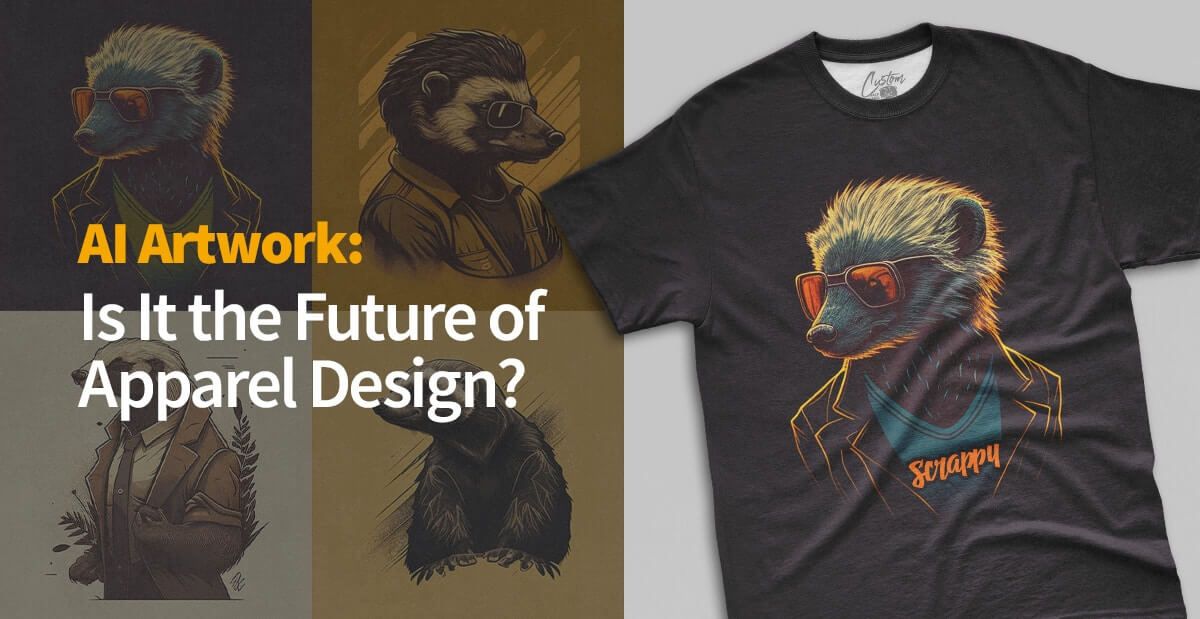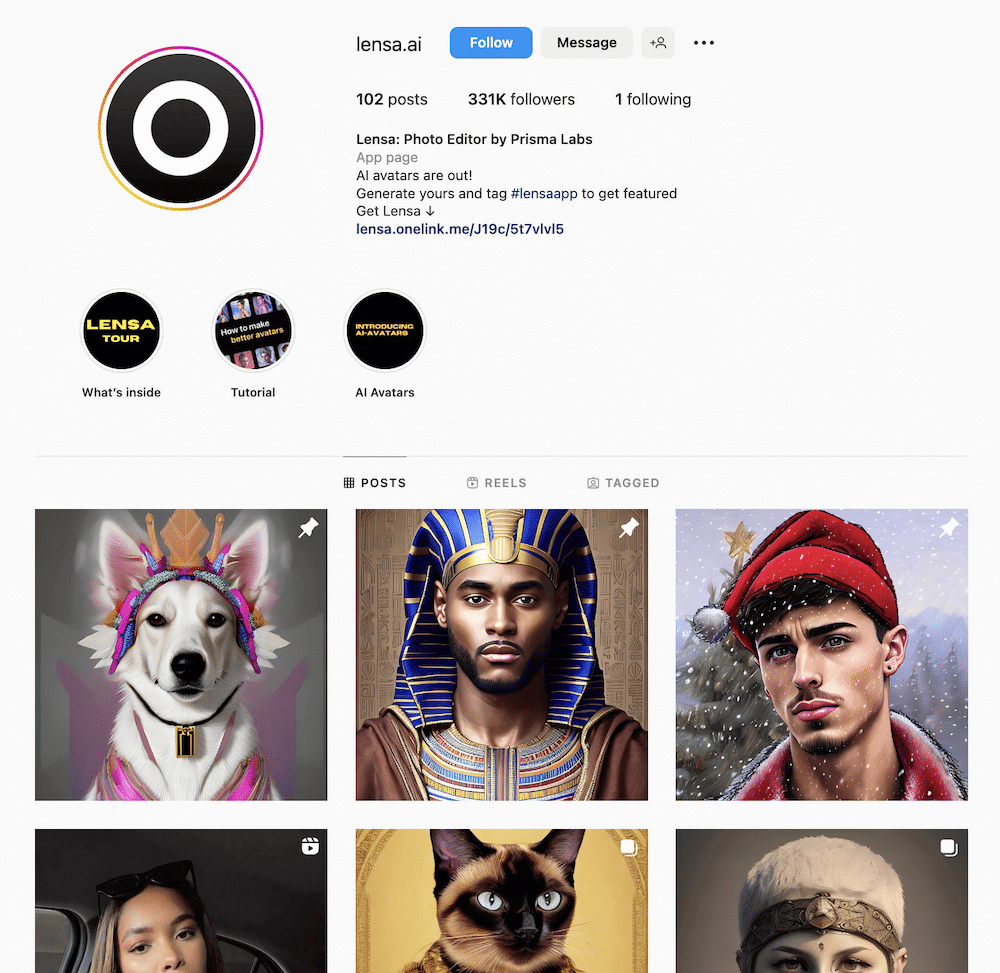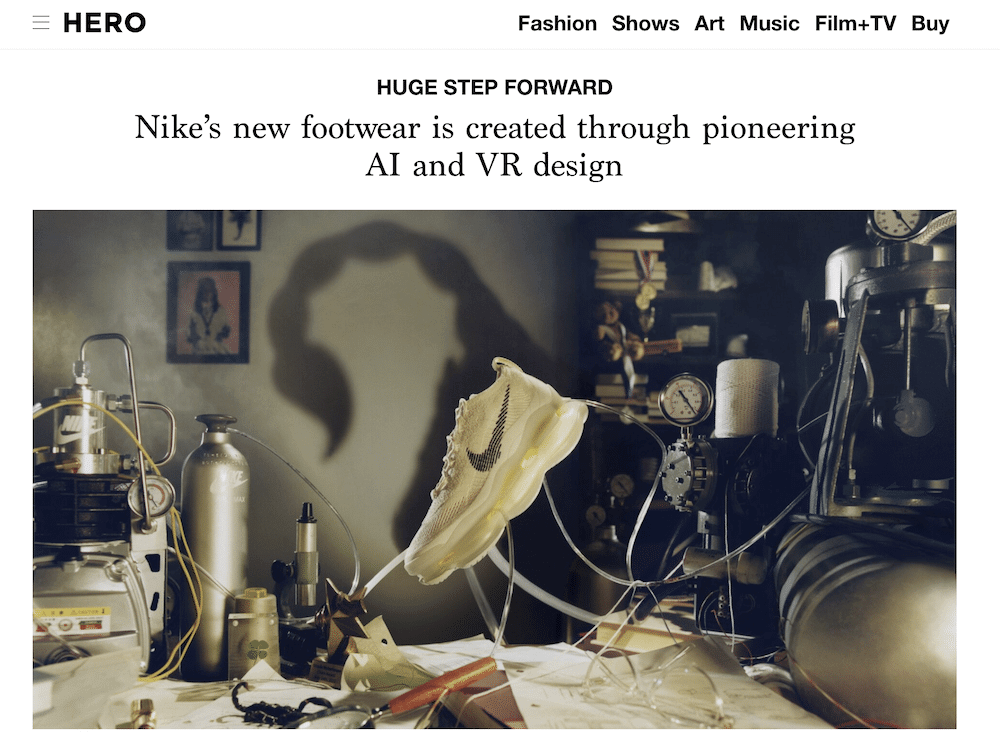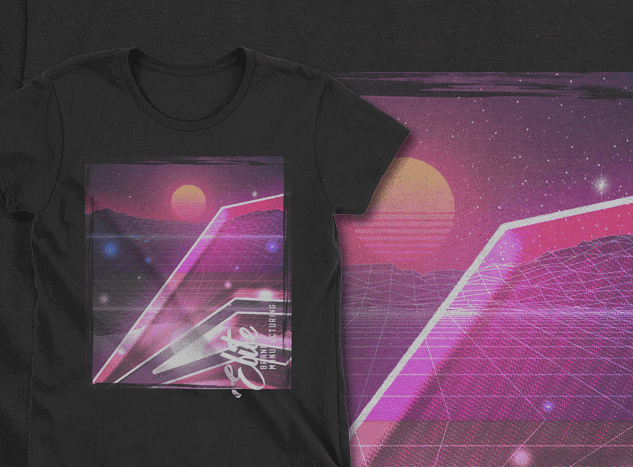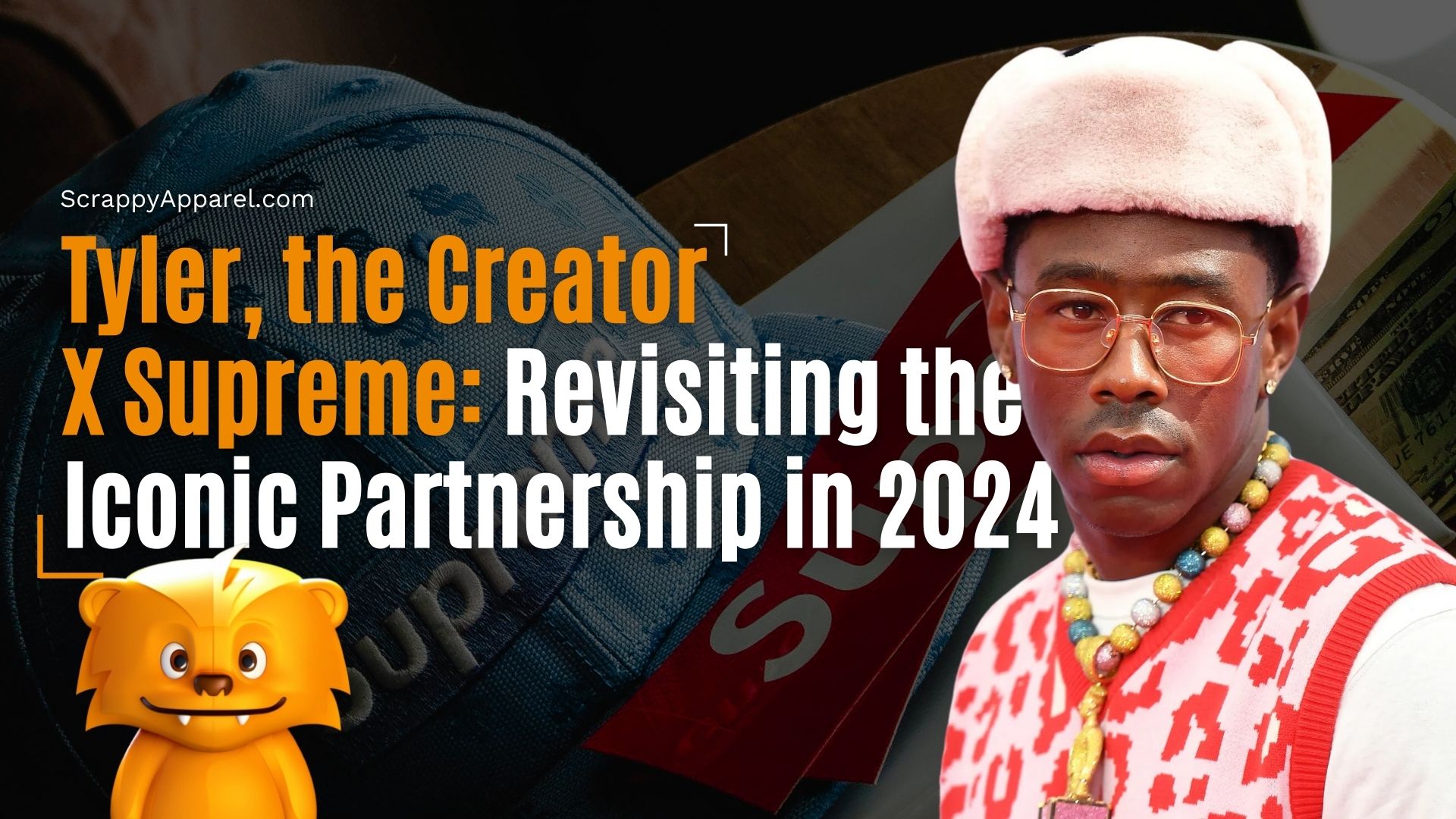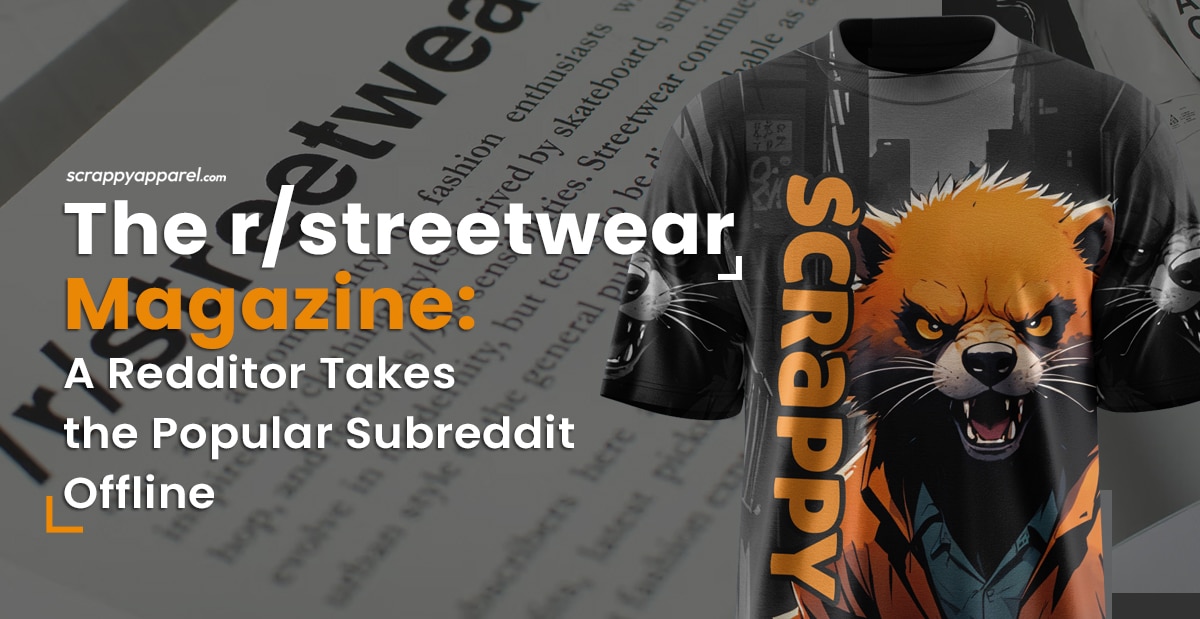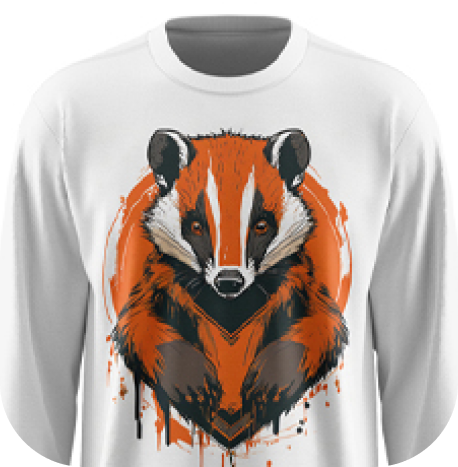AI Artwork: Is It the Future of Apparel Design?
Have you seen the recent trend of computer-generated images on social media? It began when the Lensa AI app went viral for creating “magic avatars.”
You can feed this new artificial intelligence (AI) program a few images of yourself (or any person, for that matter) and receive a set of unique, stylized avatars that have an uncanny resemblance to the images you submitted. Pretty crazy, right?
Artwork that once took designers hours of effort and time can now be produced fairly quickly with AI.
View this post on Instagram
View this post on Instagram
So, the real question is: can apparel designers leverage this technology to increase productivity and create photorealistic designs in seconds?
AI is a hot topic now, but it’s also a controversial one. While AI has been used in the fashion industry for trend forecasting, it has yet to play a major role in apparel design.
Some worry that using AI-generated designs will lead to a lack of creativity and make all designs look the same. Some people are concerned about whether AI artwork is ethical and fair to designers.
On the other hand, advocates for AI believe it can save fashion designers time and resources by automating repetitive tasks so humans can focus on higher-level creative work.
No matter how you feel about AI, it’s clear that it will become a more prominent player in the fashion world in the coming years.
Keeping an open mind, let’s take a closer look at:
- The history and current use of AI in apparel design
- The growth of the AI market
- How AI generates artwork
- The ethical implications of using AI
- The best ways to manufacture your AI designs
As AI becomes more integrated into our lives, the possibilities are endless. With a little imagination, AI artwork can be a powerful tool in the apparel designer’s arsenal.
The History and Current Use of AI in Apparel Design
AI artwork began to gain traction when digital art techniques, such as fractal art and generative design, became more accessible.
Generative design, in particular, has played a major role in the rise of AI artwork. Generative design is a process in which an algorithm creates and selects a range of options based on predetermined parameters.
These days, AI is used extensively in the fashion industry for trend forecasting and analysis. Some apparel brands have leaned into the online space to produce digital apparel that reflects real-life trends. AI-generated artwork has been successfully used for apparel campaigns, such as these sneaker designs from Nike.
Luxury fashion brands have started using AI artwork for their apparel lines. This technology allows brands to design quickly and become more creative, showing that the future of apparel design is digital.
Growth of the AI Market
The exact percentage of companies that use AI artwork to create garments is difficult to determine. However, the current market for artificial intelligence continues to grow daily, with expectations to hit a value of nearly $1.6 trillion by 2030.
More than 60% of companies in the United States are using AI technology. As more companies become aware of the potential benefits of using AI, they will adopt the technology for their own use.
How AI Generates Artwork
Wondering how AI works its magic? We were too, so we did some research. AI artwork is created in two ways: automated and interactive.
- Automated AI artwork uses a predefined set of rules to generate art. The Lensa AI magic avatars are an example of this. These works of art are rendered using algorithms that determine the shapes, colors, and textures used in each piece. The images created are usually highly detailed and photorealistic.
- Interactive AI artwork is created by users who interact with the software to create their own designs. This type of artwork allows designers to explore possibilities they might not have thought of on their own. The software responds to input in real time. The user can adjust elements like shape, color, and texture until they’ve created something truly unique.
Regardless of the approach used, AI artwork is often highly abstract and creative. However, not everyone believes AI is a good thing.
The Ethical Implications of Using AI
Using AI artwork can be beneficial for the fashion industry, but it has some ethical implications as well. Here are some of the most common arguments against AI:
Some Worry That AI Will Eventually Replace Human Designers
This is unlikely to happen any time soon. Although AI can generate artwork quickly, we still need humans to interpret the data and decide how it should be used for apparel design.
AI-Generated Artwork Could Infringe Upon Intellectual Property Rights
Another potential ethical concern is that AI artwork could infringe upon existing intellectual property rights. AI, when used correctly, can generate original artwork without violating any copyright laws.
However, there is the potential for AI to produce designs that are too similar to another designer’s artwork, especially if it uses that designer’s work as a source of reference.
The Regulatory Framework Around AI is Unclear
As technology develops, governments will need to create regulations that protect both consumers and creators. We’re not sure what that will look like, so some people are still wary of AI-produced artwork.
Creators and companies that use AI for apparel design should take the necessary steps to ensure their artwork is distinctive and original. Instead of using AI to directly copy existing designs, consider using it as a tool for inspiration and guidance.
Want to Manufacture Your AI Designs?
The best printing methods to use for photorealistic designs are simulated process screen printing and sublimation printing.
Why? Here’s a breakdown of these two processes and why they’re especially beneficial for AI-generated artwork:
Simulated Process Screen Printing
Simulated process screen printing uses a halftone image to create high-resolution, photorealistic prints. The colors are printed in dots so small that the eye can’t detect them individually.
This method allows for accurate color reproduction. Traditional screen printing works best with a limited color palette, but simulated process is an alternative for people who want to screen print a photorealistic design.
If you’re dead set on screen printing your garments, simulated process helps you reproduce detailed artwork without compromising on resolution or quality.
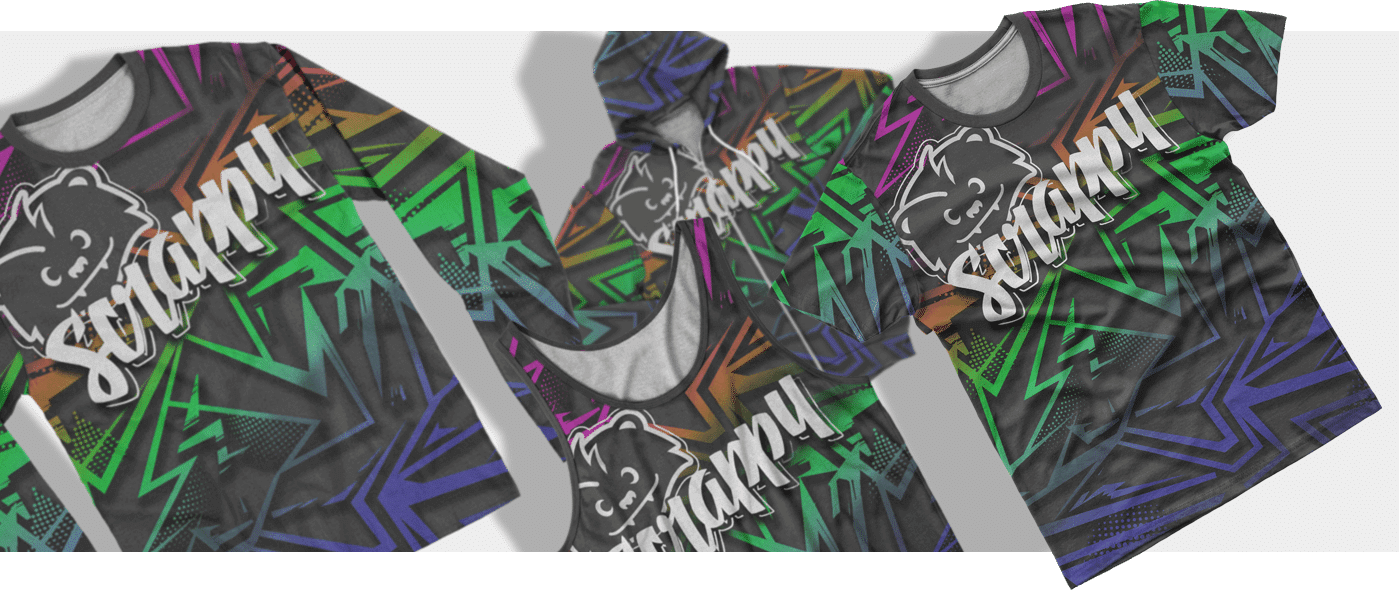 Sublimation Printing
Sublimation Printing
Sublimation is another effective printing method for AI artwork. We recommend it for designs with high levels of detail because it allows for precise and accurate reproduction.
Sublimation printing creates vibrant prints that last for years. It’s also a great option to create all-over prints because it allows you to print on the entire garment surface.
One important thing you should know about sublimation printing is that it doesn’t work well on cotton. Sublimation works best on polyester garments, so you will need to choose a different printing method if you want to produce your design on a cotton garment.
Why Choose Scrappy Apparel As Your Manufacturer?
Our team has decades of experience in both screen printing and sublimation. If you’re not sure which approach is best for your project, our team will be happy to speak with you and help you decide.
We source the highest-quality materials, including luxury-level cotton and polyester. Our team uses advanced technologies to produce prints that exceed industry standards.
We offer price breaks for bulk orders and fast turnaround times so you can get your apparel to market quickly.
Whether you need 100 garments or 10,000, you can count on us to deliver—on time, every single time.
